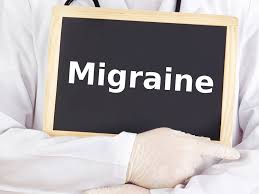- Home
- Editorial
- News
- Practice Guidelines
- Anesthesiology Guidelines
- Cancer Guidelines
- Cardiac Sciences Guidelines
- Critical Care Guidelines
- Dentistry Guidelines
- Dermatology Guidelines
- Diabetes and Endo Guidelines
- Diagnostics Guidelines
- ENT Guidelines
- Featured Practice Guidelines
- Gastroenterology Guidelines
- Geriatrics Guidelines
- Medicine Guidelines
- Nephrology Guidelines
- Neurosciences Guidelines
- Obs and Gynae Guidelines
- Ophthalmology Guidelines
- Orthopaedics Guidelines
- Paediatrics Guidelines
- Psychiatry Guidelines
- Pulmonology Guidelines
- Radiology Guidelines
- Surgery Guidelines
- Urology Guidelines
Migraine associated with jaw bone disease

In a study, researchers at the University of São Paulo's Ribeirão Preto School of Medicine (FMRP-USP), in Brazil, have found that the more frequent the migraine attacks, the more severe will be the so-called temporomandibular disorder, or TMD. The temporomandibular joint acts like a sliding hinge connecting the jawbone to the skull, therefore the disorder's symptoms includes difficulty chewing and joint tension.
"Our study shows that patients with chronic migraine, meaning attacks occurring on more than 15 days per month, are three times as likely to report more severe symptoms of TMD than patients with episodic migraine," said Lidiane Florencio, the first author of the study, which is part of the Thematic Project "Association study of clinical, functional and neuroimaging in women with migraine", supported by the São Paulo Research Foundation - FAPESP.
Previous studies already indicated that migraine is somehow associated with pain in the chewing muscles. However, this research was the first to consider the frequency of migraine attacks when analyzing its connection with TMD: eighty-four women in their early to mid-thirties were assessed, being that 21 were chronic migraine patients, 32 had episodic migraine, while 32 with no history of migraine were included as controls - the results were published in the Journal of Manipulative and Physiological Therapeutics.
Signs and symptoms of TMD were observed in 54% of the control participants without migraine, 80% of participants with episodic migraine, and 100% of those with chronic migraine.
For Florencio, central sensitization may explain the association between the frequency of migraine attacks and the severity of TMD.
"The repetition of migraine attacks may increase sensitivity to pain," she said. "Our hypothesis is that migraine acts as a factor that predisposes patients to TMD. On the other hand, TMD can be considered a potential perpetuating factor for migraine because it acts as a constant nociceptive input that contributes to maintaining central sensitization and abnormal pain processes." Nociceptive pain is caused by a painful stimulus on special nerve endings called nociceptors.
Migraine and TMD have very similar pathological mechanisms. Migraine affects 15% of the general population, and progression to the chronic form is expected in about 2.5% of migraine sufferers. On the other hand TMD is stress-related as much as it has to do with muscle overload. Patients display joint symptoms - such as joint pain, reduced jaw movement, clicking or popping of the temporomandibular joint - but also develop a muscular condition, including muscle pain and fatigue, and/or radiating face and neck pain.
Which came first?
TMD and migraine are comorbidities. However, while people who suffer from migraine are predisposed to have TMD, people with TMD will not necessarily have migraine.
"Migraine patients are more likely to have signs and symptoms of TMD, but the reverse is not true. There are cases of patients with severe TMD who don't present with migraine," said Débora Grossi, the lead researcher for the study and principal investigator for the Thematic Project.
The researchers believe that TMD may increase the frequency and severity of migraine attacks, even though it does not directly cause migraine.
"We do know migraine isn't caused by TMD," Florencio said. "Migraine is a neurological disease with multifactorial causes, whereas TMD, like cervicalgia - neck pain - and other musculoskeletal disorders, is a series of factors that intensify the sensitivity of migraine sufferers. Having TMD may worsen one's migraine attacks in terms of both severity and frequency."
The journal article concludes that an examination of TMD signs and symptoms should be clinically conducted in patients with migraine.
"Our findings show the association with TMD exists but is less frequent in patients with a rare or episodic migraine," Grossi said. "This information alone should change the way clinicians examine patients with migraine. If migraine sufferers tend to have more severe TMD, then health professionals should assess such patients specifically in terms of possible signs and symptoms of TMD."

Disclaimer: This site is primarily intended for healthcare professionals. Any content/information on this website does not replace the advice of medical and/or health professionals and should not be construed as medical/diagnostic advice/endorsement or prescription. Use of this site is subject to our terms of use, privacy policy, advertisement policy. © 2020 Minerva Medical Treatment Pvt Ltd